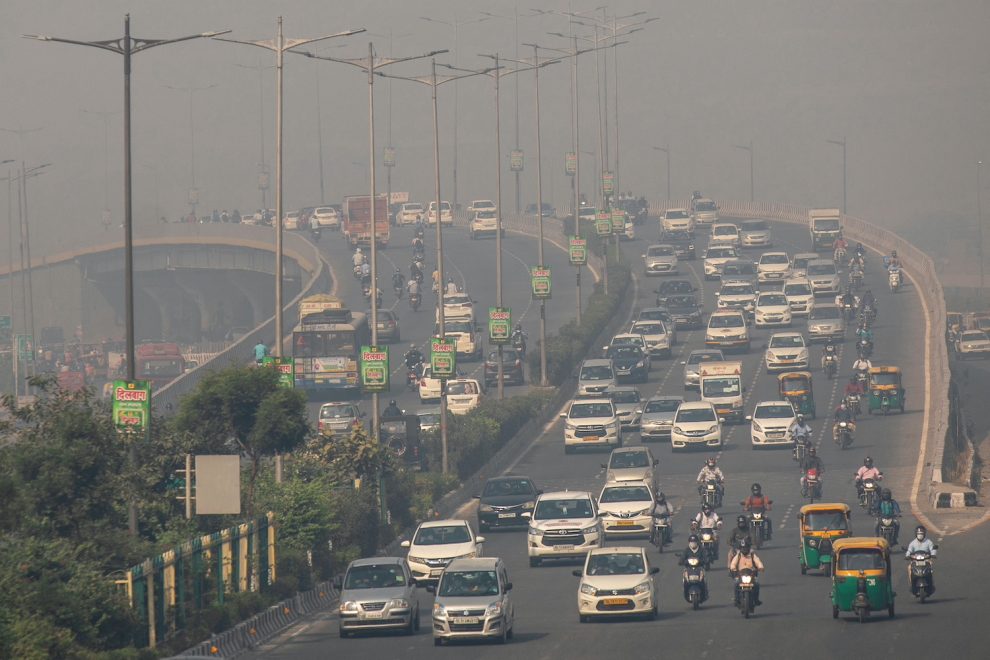Clean auto technology is at the heart of India’s effort to reduce greenhouse gas emissions, but experts are questioning whether the Modi government is reaching for the stars given the country’s inability to get EV adoption off the ground.
Indian Prime Minister Narendra Modi established a target of net zero greenhouse gas emissions by 2070 at COP26, which was notable not only because it was a decade later than most other countries attending the Glasgow climate summit.
It was also surprising because, as a developing country, India has consistently rejected such a goal at all prior climate summits. Yet experts say that while electric vehicles may only be a small part of the emissions solution, India’s dismal EV adoption is symbolically important, at least.
For, after nearly a decade of trying, India has failed to get electric vehicles started, while many other states have succeeded. Indeed, its failure creates doubt on whether the country’s other efforts will succeed as well.
India also set itself a deadline of 2030 to reduce its carbon emissions by one billion tonnes.
What are the chances? In Europe, battery electric vehicles (BEVs) made up nearly a quarter (22%) of the total number of passenger vehicles sold up to August. But in India, BEVs were a minuscule 0.65% of vehicles on the roads.
There is scepticism that India can achieve this initial goal.
“The EV sector in India is still taking baby steps with only 29 EV makers actually selling out of 226 registered makers (380 according to the government),” said Ravi Bhatia, president and director at Mumbai-based JATO Dynamics India, an automotive business intelligence company.
“While EVs are just one part of the India’s solutions to cutting emissions, the challenge is that it is not up to the producers and consumers to drive the EV market. We have seen from the example of China that the government has to take firm steps. India needs a coherent ecosystem that can drive electrification at a rapid pace, and that is missing.”
Ambitious Targets
Recognizing that road transport is a major source of carbon dioxide emissions, India has set a target of replacing 30% of new autos, 70% of commercial vehicles, and 80% of two-wheelers and three-wheelers with EVs by 2030.
But, despite the surge in electric two-wheelers and electric three-wheeler sales in recent years, India is still a long way from meeting the 2030 road transport targets.
Experts say the EV ecosystem is in its infancy and cannot support a rapid increase in electric vehicle demand.
Driving range is a major concern for consumers when considering switching to an electric vehicle, but the Society of Manufacturers of Electric Vehicles estimated there were only 1,800 charging stations in India in March for about 16,200 electric cars, including fleet vehicles. Others have said there are now over 2,500 charging stations. But that’s hardly sufficient for a nation of 1.4 billion people.
India is working hard to make electric cars cheaper, but Jyoti Gulia of JMK Research and Analytics says “finance choices are still a key problem for prospective users.”
According to JMK, bankers lump electric vehicles in with gas-powered vehicles and charge EV purchasers interest rates ranging from 12% to 16%.
“India is a price sensitive market. While the cost of EVs is rapidly declining, it is still higher, and charging infrastructure is in the nascent stages of ramp up. The penetration of EVs is hence slow (but steadily growing,) and is up for a disruption,” Vaibhav Chaturvedi, an economist at The Council on Energy Environment and Water, said.
Renewables vs Coal
Aside from EVs, India has other obligations, such as increasing non-fossil energy capacity to 450 gigawatts (GW) by 2030 to meet about 50% of the country’s total energy needs.
Experts believe that the 2070 pledge provides a growing upside risk to that goal.
For despite efforts to portray India as environmentally concerned and encourage investments in sustainable energy, India could remain captive to fossil fuels for decades.
A rapid transition to a clean fuel economy would be hampered by rising demand for coal, fossil fuels, because of multi-billion-dollar investments in oil, gas, and transportation infrastructure.
“Until recently, India did not have a target, which created uncertainty for higher investments by enterprises in long-term fossil fuel fuelled projects,” said Vibhuti Garg, an economist at the Institute for Energy Economics and Financial Analysis (IEEFA).
“However, since the pledge pushes the net zero goal 50 years away, many would now be encouraged to invest again to extend the life of existing projects for at least the next 25 years,” she noted.
Despite a total installed renewable energy capacity of 100 GW (excluding hydro, which accounts for another 46 GW), coal’s proportion of overall output remains above 70%, with analysts predicting a decline to just 65% by 2030.
And a 5%-reduction in coal-fired production every decade will not be enough to meet the Modi government’s decarbonisation targets, so the sector’s dominance in the national power mix will be difficult to overcome, they add.
Energy Storage
Nonetheless, the pledge bodes well for the renewable energy sector to some extent at least, since it gives the battery storage and green hydrogen businesses a boost.
IEEFA believes that these two areas, which are vital to India’s renewable future and energy security, might scale up quickly if state policies and private initiatives support them.
The cost of grid-scale battery storage has been prohibitive for India, which does not currently have a local battery manufacturing value chain, but the cost of battery storage has dropped drastically globally – from $1,100/kWh in 2011 for a standalone lithium-ion battery set-up to $58/kWh by 2030.
India’s battery market could boom quickly, as in the US and Australia, the IEEFA says.
Similarly, steel, coal, fertiliser, biogas and heavy transport hubs are also keen to build industrial clusters that link green hydrogen production to its industrial setups, IEEFA said.
• Indrajit Basu
READ MORE:
US, China Sign Deal to Boost Cooperation on Climate Change
COP26 Hopes Dim On Chinese President Xi’s Likely Absence
























